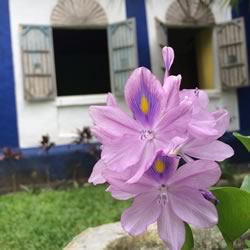
Welcome...to our garden
Deu boro dis dium! Namaste! Bom Dia!
From the moment you step into The Secret Garden Goa, at Saligao, you encounter a whole new world. This homestay is spacious, luxurious and romantic. But most of all it is a ‘home away from home’, yet without the hassle of daily chores and stress of everyday life. The Secret Garden Goa, is set in the ancestral Menezes family home in the vaddo of Pequeno Morod, one of the seven wards that make up the pretty village of Saligao in Bardez, North Goa. The lush green gardens welcome you; the crystal clear pool beckons you. Leave your troubles by the gate – unlock luxury and immerse yourself in our home and experience a slice of Goan life.
Our homestay offers discerning visitors the unique opportunity of experiencing life with a local Goan-British family, but with the privacy and level of comfort afforded by the best boutique hotels. We grow our own organic coconuts and various fruits, herbs and veggies in our garden, all irrigated with water from our own well, that also supplies the house with fresh clean water. Our water is heated by our trusty solar panel, ensuring a lovely hot shower whenever required. We recycle as much as possible and compost with gusto.
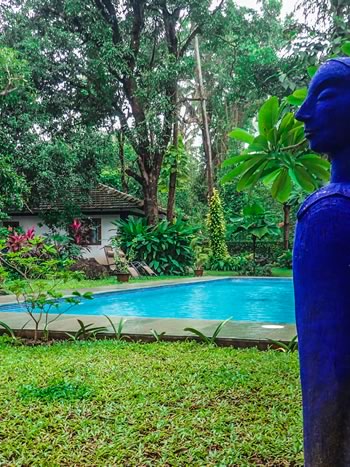
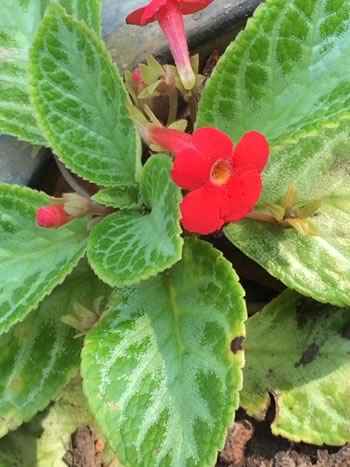

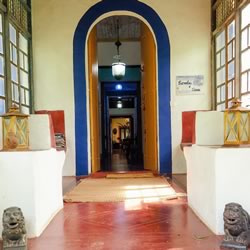
Welcome...to our house
The house has a name too - Estrelas e Sinos (meaning ‘Stars and Bells’). This grand Indo-Portuguese home was built in 1864, which makes the house 153 years old!
Paulo Menezes was the oldest ancestor of the Menezes family of this house; with two sons Pedro Menezes and Salvador Manuel Menezes. Salvador Menezes became a priest and built the Chapel of Our Lady of Victory (circa.1753) at Pequeno Morod vaddo behind the site of the present parish church. That chapel was eventually demolished and its stones are believed to have been used in the building of the church. Paulo's great grandson Eugenio Menezes (b.1824) travelled to work in Punjab in North India, and on his return he acquired land in Pequeno Morod and built this present house in 1873. Eugenio Menezes had a son to whom he gave a name as splendid as his house: Eduardo Claudio Alexandre Magno Pedro Antonio Menezes!
The ornate oyster-shell windowpanes, high eaves moulding and clay tiles of Estrelas e Sinos give it a quiet old-world charm. The house sprawls across 7500 square feet; mirrored in size externally with the lush green garden and pool and patio areas. Our pool is long enough for you to exercise or simply cool down. The gardens have hammocks and loungers to simply kick back and relax.
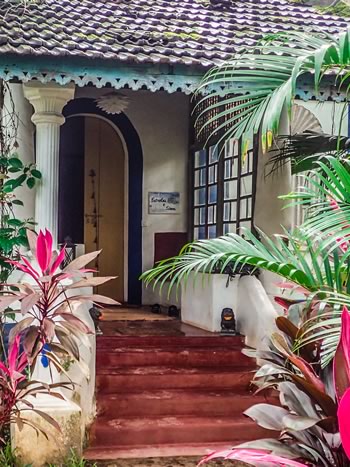
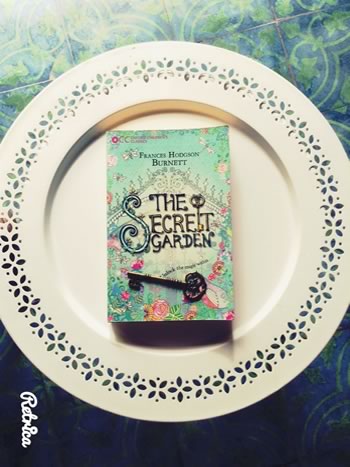
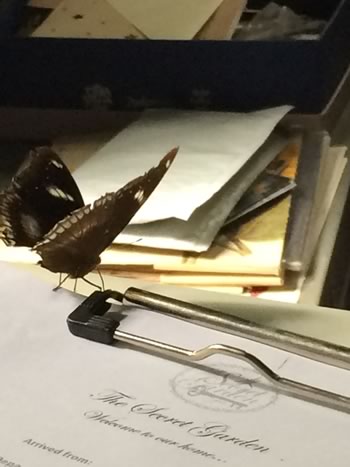
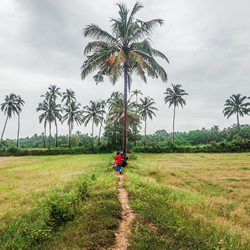
Welcome...to Goa
India’s smallest state – more than a pretty beach. The ancient City of Goa, located at present day Old Goa, was a thriving port centuries ago. Various princely dynasties ruled over this region. In 1510 the Portuguese captured the city from its then ruler Yusuf Adil Shah, and gradually took control of all that is now known as Goa. In 1961 colonial rule ended and Goa became part of India. Being a strategic location on the western coast of India for all its erstwhile rulers, Goa is dotted with forts like Fort Aguada, Reis Magos, Chapora Fort, Tiracol Fort in north Goa and Cabo da Rama in the south. The complex of churches of Old Goa is a World Heritage site. The temples of the Hindus, the majority community of Goa, include the elegant Mangueshi and Shantadurga temples in Ponda.
Goa has a vibrant local cultural scene. Its premier arts centre is the Kala Academy in the capital city Panjim. Goans enjoy their feasts and festivals with exuberance. The natural beauty and cultural heritage of Goa makes it a hotspot of global music concerts, literary events, corporate conferences and what have you! Oh, and yes, we have a 105 kilometer long coconut palm-fringed coastline, with its world famous beaches!
Things To Do
Goa is so much more than our beautiful beaches…
In Old Goa you will find the last remnant of the Portuguese presence in Goa which established its capital on the southern bank of the Mandovi River. In its heyday back in the 1500’s it was the largest and a flourishing great Asian cities known called ‘Goa Dourada’, Golden Goa.
Churches at Old Goa include the famous Bom Jesus Basilica (1605) a fine example of Jesuit architecture. The embalmed body of St Francis Xavier lies entombed in a marble mausoleum and was presented to Goa by the Duke of Tuscany who received the Saint’s pillow in exchange. Once every 10 years the Saint’s remains are put on display and are venerated by thousands of pilgrims who travel the world to pay their respects.
Se Cathedral (1619). Once the largest church in Asia, this 16th century monument to the Roman Catholic rule of Goa under the Portuguese houses the ‘Golden Bell’, the biggest in the world. The church has 14 side chapels, the last of which preserves a cross upon which a vision of Christ is said to have appeared in 1919.
Church of St Francis of Assisi. Adjacent to the cathedral, this church’s interior is adorned with a profusion of carvings and exquisite paintings. The convent at the back of the church is now the Archeological Museum and houses many portaits of the Portuguese Viceroys and fragments of sculpture from Goan Hindu Temple sites.
St Cajetan Church is built on the lines of St Peter’s Basilica in Rome.
Our Lady of the Mount (1547). The view from ‘the Mount’ is stunning and definitely worth the visit. It is also home to the now famed Monte Music Festival.
Vasco Da Gama. This coastal town, named after the Portuguese explorer who discovered Goa, was originally called Sambhaji. This well laid out city houses the main railway terminus and Goa’s only airport, Dabolim, is a mere 4km away.
Margao. The Holy Spirit Church, founded in 1565, dominates Goa’s second largest city which still resembles a portion of Portuguese past. The large Jorge Barreto Park, Chandreshwar Bhutnath Temple and Rachol Seminary are worth a visit.

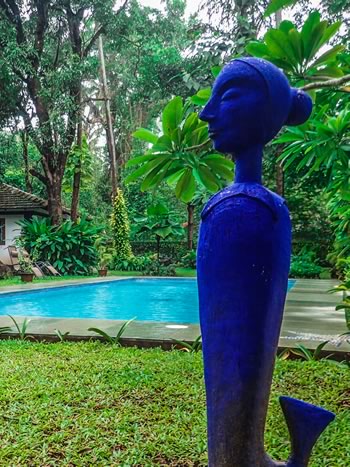
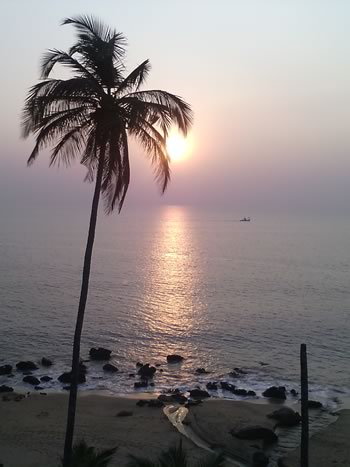
A Little Menezes Family History…
The history of the Menezes family of Pequeno Morod, Saligao appears to start with an ancestor by the name Paulo de Menezes married to Vitoria Sequeira, who were residing in a house nearby the current property, which now houses the CIE building. He built the Chapel of Nosa Senhora de Boa Vitoria, {Chapel of Our Lady of Good Victory} attached to his house with the income of the patrimonial estates of his son Manuel Salvador de Menezes. {This is mentioned in the will of Paulo de Menezes dated 27th January 1723 in book 1021 in the archives of the High Courts.}
The chapel was built before 1753 probably before 1723 according to Fr. Gomes Cactao in his article entitled ‘Churches and Chapel of Saligao’, written at the time of the centenary celebrations of Mae de Deus Church in 1973. Incidentally Manuel Salvador Menezes, the son of Paul de Menezes, was the second priest to be ordained from Saligao. Apparently the chapel seems to have been named after the wife of Paulo de Menezes ie Vitoria Sequeira.
This chapel was obviously a private family chapel and was eventually owned by a descendant called Alexandre Menezes. However, when Alexandre Menezes suddenly died, probably around 1830 his wife Regina Santos was not aware that she had to pay the land tax of her vast properties. Apparently the family property were so extensive that they were able to go to the Church of the Holy Trinity at Nagoa on horseback travelling mainly through their own property!
It appears that because the widow of Alexandre Menezes did not pay the land tax the Portuguese Government confiscated her properties (date not known) and the main house and surrounding land were sold at a public auction to the Pinto Lobo family from Pomburpa. Alexandre’s widow, Regina Santos e Menezes, was forced to stay in a small hut nearby with her son Eugene Menezes who eventually went to work in the Punjab (for a wealthy Maharajah) and he accumulated enough money to return and buy back some of the family property from the Pinto Lobos, on which now stands the ancestral house.
The construction of the house was completed in 1864 Eugenio de Menezes so Eduardo de Menezes was born in 1854 and in 1873 was married in the newly inaugurated church of Mae de Deus to Amelia de Mello. Edvardo Claude Alexandre Magno Pedro Antonio de Meneges father ordered cutlery and crockery from Europe for his wedding of which a few pieces remain in the house today bearing his initials.
Their descendants have been occupying the house from then till the present time. Derrick Paul Eugene and his wife Helene Menezes now own the house. Derricks name is clearly indicated in the ancestry.
Incidentally after Regina dos Santos lost her property the chapel passed into the hands of a committee and was eventually demolished and the stones were used for building the beautiful Mae de Deus church. The statue of Our lady of Good Victory was transferred along with the belongings of the chapel, {we wonder if this includes the church altar} to the newly built church.
The house is one of the largest and oldest in the vaddo of Pequeno Morod in Saligao. It the only one in which the original family still lives. Both the cross from the original chapel and the Mae de Deus church are in view of the property.
